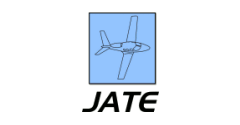Abstract
The phenomenon of overbanking tendency for a rigid-body, fixed-wing aircraft is investigated. Overbanking tendency is defined as a spontaneous, unbalanced rolling moment that keeps increasing an airplane’s bank angle in steep turns and must be arrested by opposite aileron action. As stated by the Federal Aviation Administration, the overbanking tendency may lead to a loss of control, especially in instrument meteorological conditions. It was found in this study that the speed differential over wing halves in horizontal turns indeed creates a rolling moment that achieves maximum values for bank angles between 45 and 55 degrees. However, this induced rolling moment may already be a part of other lateral-directional stability derivatives, most probably in dihedral effect. Nevertheless, the overbanking tendency may also be induced by propulsive and/or gyroscopic moments, airplane and flight control rigging problems, human factors, and improper piloting techniques. Straightforward explanation of the overbanking tendency is based on the asymptotic spiral divergence lateral-directional mode, which is very common in many FAR 23 airplane designs. The full nonlinear stability model, which may include coupling of longitudinal, lateral, and directional motion in steep turns at high angles of attack and including propulsive moments, may be required to make the final judgment about the existence of the overbanking tendency. A thorough review of airplane turning performance in horizontal plane is presented.
Recommended Citation
Daidzic, Nihad E.
(2015)
"A Contribution Toward Better Understanding of Overbanking Tendency in Fixed-Wing Aircraft,"
Journal of Aviation Technology and Engineering:
Vol. 4:
Iss.
2, Article 1.
Available at: https://doi.org/10.7771/2159-6670.1107
Included in
Aerodynamics and Fluid Mechanics Commons, Aeronautical Vehicles Commons, Applied Mechanics Commons, Control Theory Commons, Dynamic Systems Commons, Engineering Physics Commons, Fluid Dynamics Commons, Non-linear Dynamics Commons, Numerical Analysis and Computation Commons, Partial Differential Equations Commons, Propulsion and Power Commons, Space Vehicles Commons


